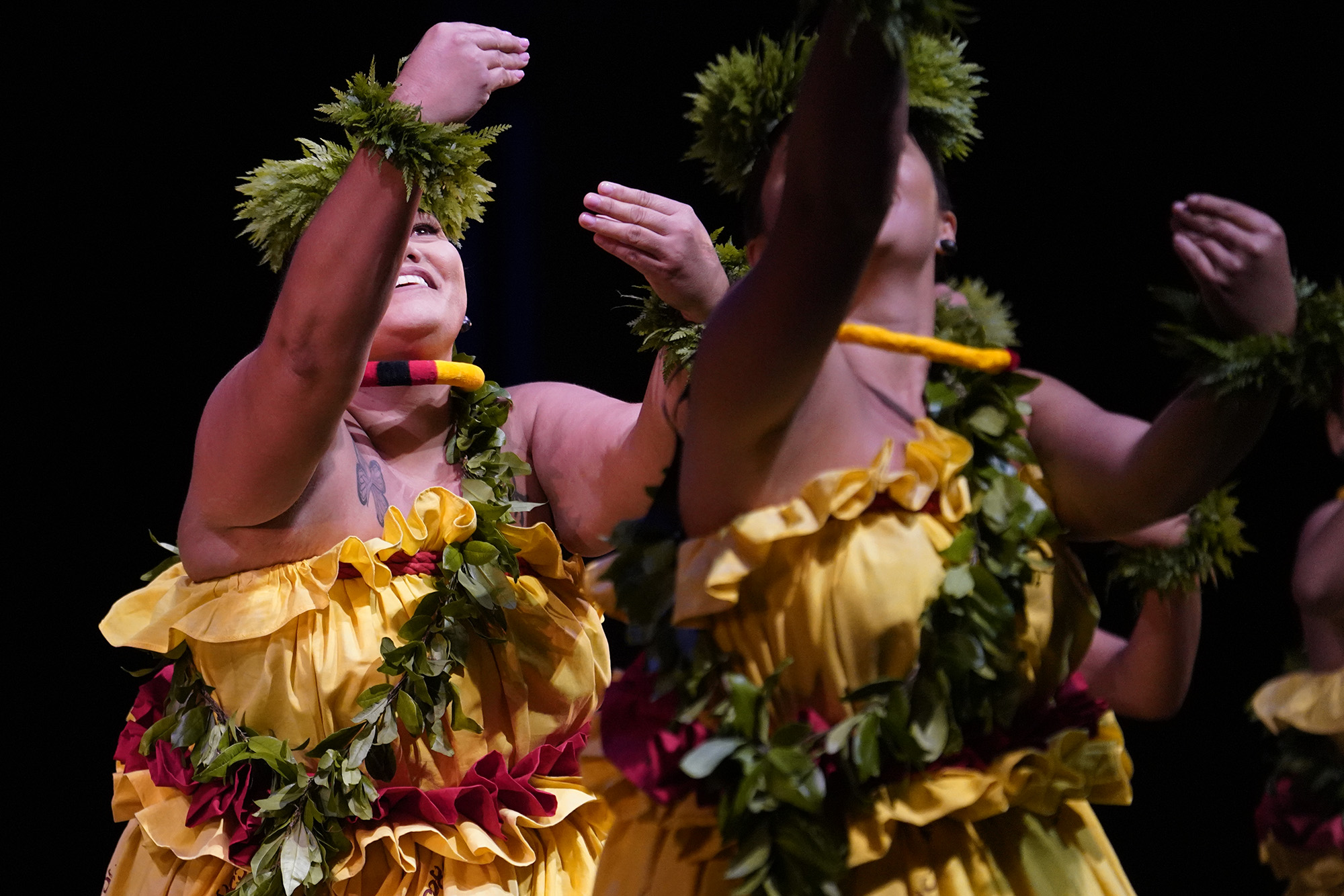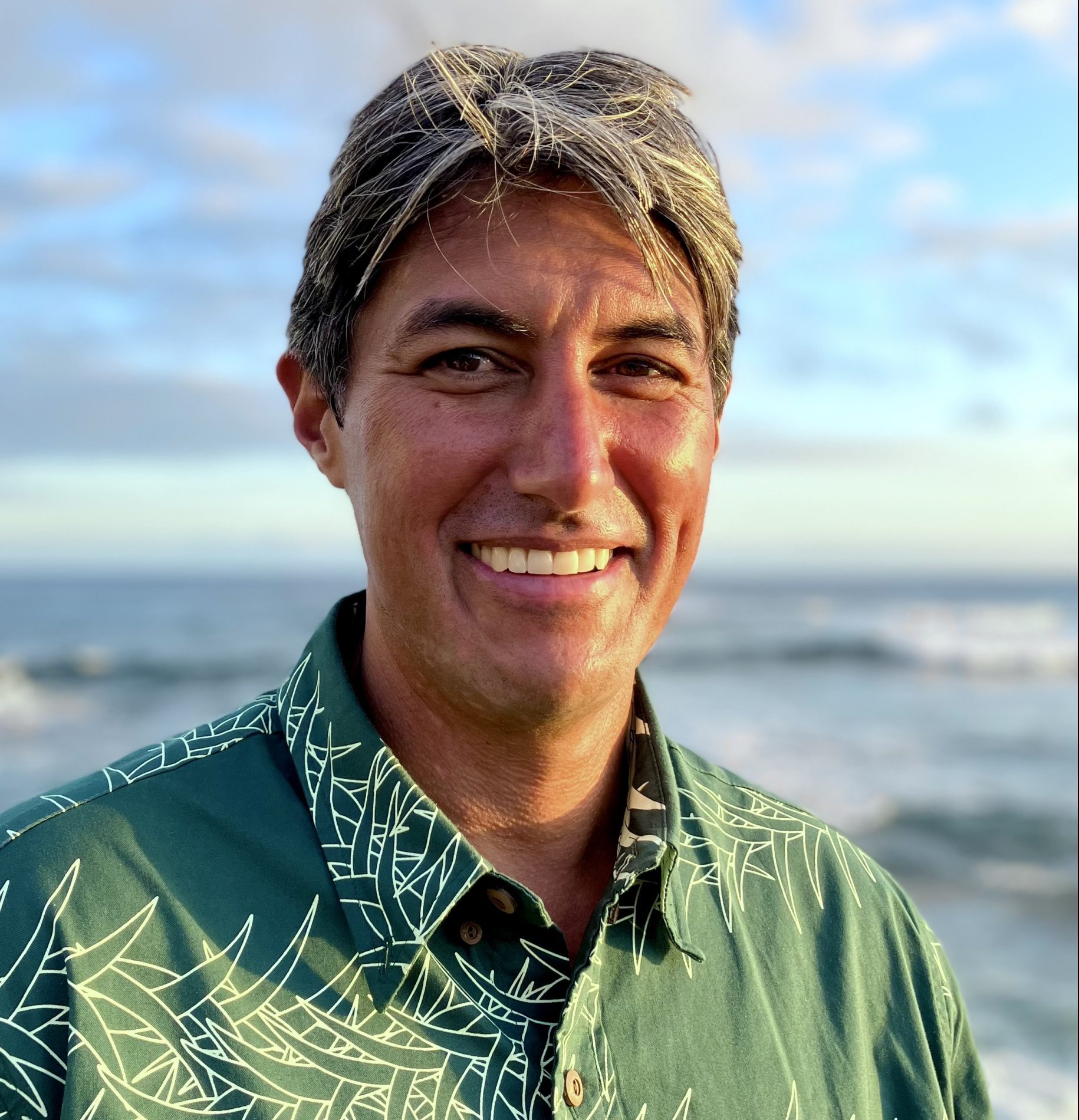Naka Nathaniel: The Paradox Of Honoring Traditions Plays Out In Hula
At Merrie Monarch, a kumu hula continually pushes for innovation in the ancient Hawaiian art.
April 10, 2024 · 5 min read

About the Author
Naka Nathaniel is an Editor At Large for Civil Beat. You can reach him at nnathaniel@civilbeat.org.
At Merrie Monarch, a kumu hula continually pushes for innovation in the ancient Hawaiian art.
Traditions were once innovations.
How do we encourage innovation in our Hawaiian traditions and bring them forward to keep them relevant? Can we honor our traditions with innovation?
I’ve been thinking about this after last week’s Merrie Monarch Festival in Hilo.
The Friday of Merrie Monarch between 3 and 7 p.m. might easily be my favorite time to be in Hawaii. I loved strolling past the tables of the crafts fair holding hands with my nieces as we navigated the crowds looking for an early birthday present for freshly pierced ears. We saw family, friends and said aloha to Hawaii celebrities.
Everyone is beautifully dressed and full of excitement for the special evening of hula performed in the traditional style, kahiko.
The halau — the hula schools, academies or groups — are presented with the paradox of presenting something ancient while seeing and experiencing hula through a 2024 lens. Many halau rely heavily on implementing tradition, while others bring modern touches or even challenge the idea of tradition.
“I’m fighting this idea of tradition,” said Mark Keali’i Ho’omalu, the kumu hula of the Academy of Hawaiian Arts based in Oakland, California. “I come from a time when my kumu hulas said creativity, artistry and innovation were important and said develop your own style. And today it’s like, ‘Oh no, that’s all wrong.'”
Ho’omalu is renowned for his distinctive takes on hula and mele and his return to the Edith Kanaka’ole Stadium was eagerly anticipated.
His style and flair have stood out for decades. He has a Karl Lagerfeld vibe. He’s always clad in his dark wraparound shades and brings a rock-and-roll sensibility to his performances. Like many successful kumu hula, he can be tough on his dancers.
Ho’omalu and Patrick Makuakane, who won a MacArthur “genius” fellowship last year, have pushed the envelope of Hawaiian culture from the San Francisco Bay area.
“I don’t think I’m innovative,” Ho’omalu said. “I think that the rest of everybody is stuck on an idea that the point of hula is to imitate (earlier generations) and do what they did.”
Ho’omalu pushed on the idea of cultural misappropriation and suggests that many halaus are engaged in generational misappropriation.
“What I’m looking at is a bunch of irrelevance,” he said. “Who are you singing for? Because all the people that you’re singing for are already dead. What about the next generation? They got to move on because they got to live in the world tomorrow. It’s good to bring something that they can understand.”

Ho’omalu’s performances are certainly crowd-pleasers. The seats around my ohana sat empty until just before the Academy of Hawaiian Arts took their places in the wings offstage. Several young and fashionably dressed hula aficionados suddenly appeared to take their seats as Ho’omalu pounded his heel on the floor of the stage seeking out the place to make his ipu resonate.
They chee-hoo’d the performance and sat through the handful of halau that performed between the Academy of Hawaiian Arts men’s and women’s groups.
As the women from California exited the stage, the aficionados too left the stadium.
“Our people are who we dance for,” not the judges, he said. “We want them to be inspired and feel good about being Hawaiian.”
This is not a new controversy. Bob Jones, the late husband of my Civil Beat colleague Denby Fawcett, wrote 10 years ago about this push-and-pull.
“That’s a shame and a result of our fretting over offending Hawaiian culture,” he wrote in Midweek in April 2014. “Dance evolves. If you demand tradition, we’d all do the 6,000-year-old belly dance.”
Ho’omalu said traditional hula is based on a storybook kingdom (specifically, the reign of David Kalakaua who ruled the Hawaiian kingdom from 1874 to 1891, and who the festival honors.)
“Everybody in the world is looking for an illusion to break them away from the mundane existence of life,” he said. “Today is nuts. We are looking for this mythical place, this fantasy world and Hawaii is one of the places that we can do that.”
The fantasy and the reality of Hawaii in 2024 sometimes don’t exist on the same spectrum.
Hawaiian culture is being pushed forward by the demands of crises. New protocols were required to properly handle the remains in the aftermath of the fires in Lahaina since cremation isn’t a traditional Hawaiian practice.
“We fantasize our own self every time we go on the Merrie Monarch stage,” Ho’omalu said. “We wear malos. We don’t wear malos every day, but we can fantasize. How wonderful is that?”
Very wonderful, but I was glad to be wearing a Sig Zane shirt and not wearing a malo.
So if the stage wasn’t the place where imagination was embraced, there was another place very close by that did. The cutting edge Hawaiian fashions worn by many in the audience were outstanding examples of creativity, artistry and innovation. Hawaiian designers like Manaola, Designz by Kamohoali’i and many others demonstrated how traditional aloha wear has been made relevant.
What are the new traditions we need to encourage? What are the innovations we can develop in Hawaii that can withstand the test of time?
Perhaps it’s not a choice between honoring the past versus driving toward the future. Perhaps it’s possible to honor the past generations of creative innovators through more creative innovation.
 Sign up for our FREE morning newsletter and face each day more informed.
Sign up for our FREE morning newsletter and face each day more informed.
Local reporting when you need it most
Support timely, accurate, independent journalism.
Honolulu Civil Beat is a nonprofit organization, and your donation helps us produce local reporting that serves all of Hawaii.
ContributeAbout the Author
Naka Nathaniel is an Editor At Large for Civil Beat. You can reach him at nnathaniel@civilbeat.org.
Latest Comments (0)
Hawaiians gotta be more like Tahitiansâthereâs more than one way to paddle a canoe.
Imaikalani · 2 hours ago
Such "exceptionalist" branding runs counter to the ethic of the amazing Mark HoÊ»omalu hÄlau, and has no basis in fact. That art & feeling can be scored & ranked is okay within friendly competitions, but to extrapolate further gets us to beauty pageant silliness, or if across cultures into Leni Riefenstahl territory.Example: the Festival of Pacific Arts doesn't "score" participants, and is a wondrous, inclusive, and celebratory event held around the Pacific every four years. On the other hand, the western pow-wow circuit was corrupted by "precise" scoring (eg. "...and for Traditional Costume, the judges score 8.7, 8.8, 9.5 and 8.9 !"), and by money & prizes (top dancers pull in 6 figures, trucks, etc). Starting in the 90's, participants looking to max out scoring turned to acts unacceptable in tribal tradition or even law ("go shoot a dozen eagles so I have fresh bustles at the Ft. Hood pow-wow, dang those judges are strict").Hopefully MM avoids the perils of commercialism, and the exceptionalism cited above.
Kamanulai · 5 hours ago
For me, as an outsider looking in, I felt like the wahine very much understood the assignment. The mele chosen was a celebration of Kalakaua's inaugural trip to the islands. Their performance was very much a celebration. It was noisy and exhilarating, making me feel like this was a party, the massive celebration that greeted Kalakaua everywhere he went. They took the concept and made it engaging while also remaining true to the core of the mele. I mean... when was the last time you heard a quiet celebration in Hawaii? It was traditional in that sense!And I think people need to have a good long think about if they want fossilization of hula kahiko or if they want it to be a living, breathing thing. If hula kahiko fossilized, it dies just like languages do, held static and unmoving. If it's living then people need to accept that there are going to be kumu hula and their halau that are going to push and challenge the concept of "tradition."
cats_and_caffeine · 6 hours ago
About IDEAS
IDEAS is the place you'll find essays, analysis and opinion on every aspect of life and public affairs in Hawaii. We want to showcase smart ideas about the future of Hawaii, from the state's sharpest thinkers, to stretch our collective thinking about a problem or an issue. Email news@civilbeat.org to submit an idea.
